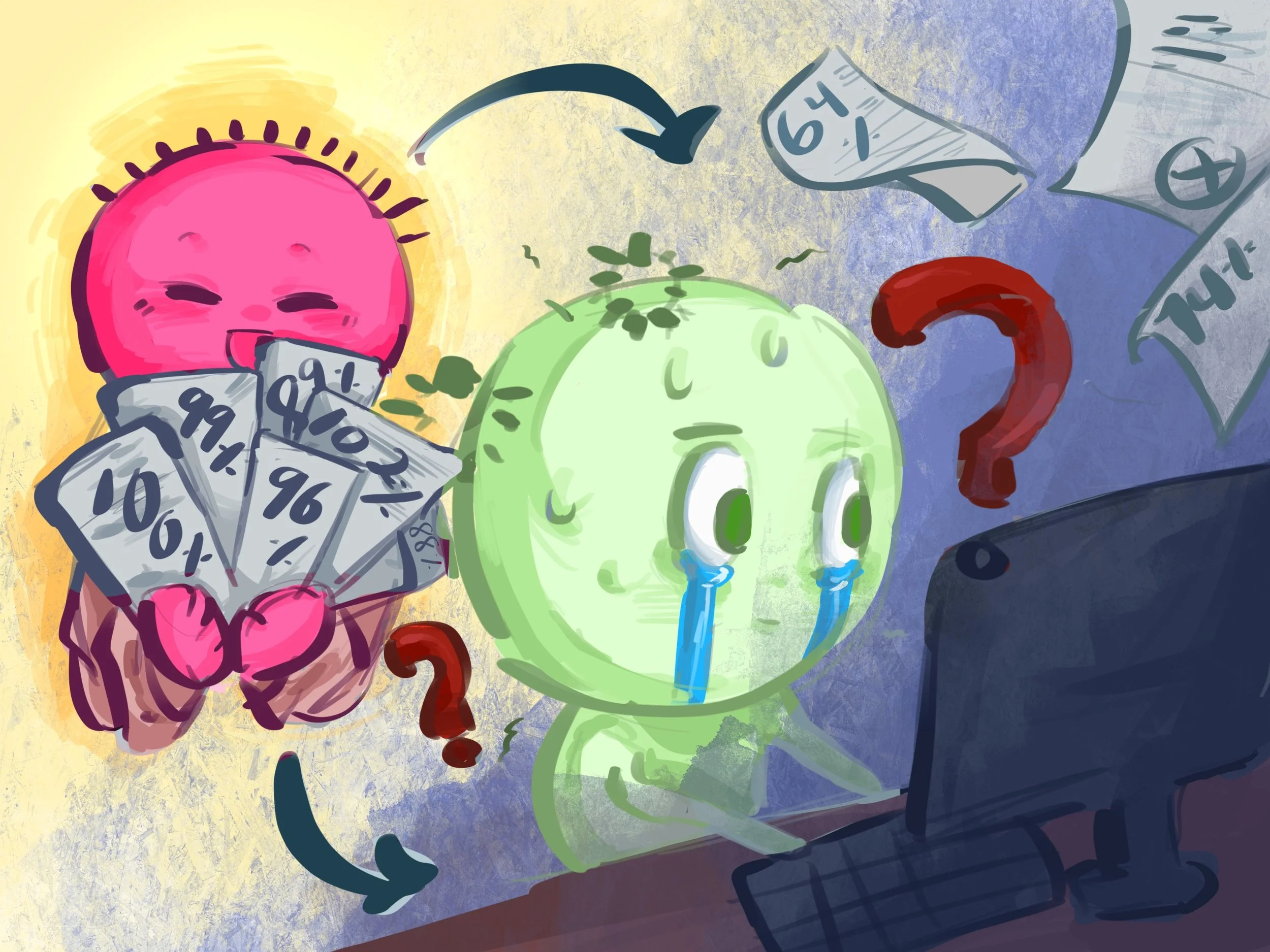National Academic Test Scores Are Going Down. So What’s Behind It?
NAEP scores have been falling since 2014 and are now at the lowest levels in the test’s history. Art: Yan Chen
By JOEMI QUIROZ ORTIZ
Ever feel like your brain just shuts off the moment you see a math problem? Turns out, you’re not alone. According to the latest National Assessment of Educational Progress — also known as The Nation’s Report Card — American high school seniors’ reading and math scores just dropped to their lowest levels in history. Yeesh.
Don’t know what the NAEP is? It’s basically a national framework to assess students on core subjects such as reading, math, and science. The NAEP test is administered to fourth, eighth, and twelfth-grade students, to measure student achievement and how it fluctuates over time.
Not every student in those grades takes the test. The National Center for Education Statistics formulates a list of eligible schools across the country, and from that list, they select schools within each state with a process called stratified random sampling (shoutout to my AP Statistics students).
So how did seniors do?
In 2024, only 22% of twelfth graders were “proficient or above” in math, compared to 26% back in 2013, and the lowest result in the test’s 30+ year history. Meanwhile, 45% of seniors scored below the “basic” level, also the worst ever.
Reading didn’t fare much better: In 1992, 20% of students scored “below basic,” landing them at the bottom of the chart. In 2024, that number rose to 32% percent — yikes. It’s not looking too good for our upcoming adults.
But what exactly is the problem? Is it really those “darn phones,” the year and a half of remote learning, maybe a decrease in attendance?
Many believe that the pandemic led to an increase in student laziness, with “Covid kids” losing some of their willpower to finish assignments themselves. However, the decline in NAEP scores started in 2014, with over a decade of data hinting at a slow, steady slide in academic performance. While the pandemic certainly accelerated the trend, warning signs had been evident long before Zoom classes became prevalent.
For one thing, many students had simply stopped showing up. Even before the pandemic, schools were reporting rising rates of chronic absenteeism — meaning kids were missing at least ten percent of school days, whether excused or unexcused, a trend that quickly exploded once online classes became the new norm. According to the latest Nation’s Report Card, 31% of twelfth-graders reported missing three or more days of school in the month of taking the national assessment in 2024, in comparison to 25% in 2019. And the RAND Corporation, a nonprofit research institute, found that in roughly half of urban school districts, more than 30 percent of students were chronically absent last year.
Why are students missing classes? Well, the reasons vary. Government teacher Ms. Keri Palmeri, who’s been teaching for almost a decade, says personal challenges play a huge factor in student attendance.
“Something as simple as divorced parents or fighting with a friend can mess a kid up,” she said. “You can’t just leave those problems at home; you think about them throughout the day.”
How about phones and A.I. — are they also to blame? Before Covid, it wasn’t common to hear a teacher say “take out your devices” to complete an assignment. But when in-person classes resumed in 2021, our worlds were increasingly filled with programs like I-Ready, BrainPop, and Nearpod — and now it’s often ChatGPT and Google Gemini.
ESL teacher Mr. Oleg Dudal, who works with students new to the country, has noticed a rapid decline in reliance on pen and paper. “You could say an art form is dying out,” he said. The thinking is that “writing in pen and pencil isn’t practiced much anymore, so what’s the point?”
But the increase of devices in schools could be part of the problem. As an experiment the Argus conducted last month shows, handwriting is beneficial for memory retention. And the rise of technology has also led to students letting A.I. do more and more of their assignments (and thinking) for them. It should be no wonder that test scores are falling, with all of these factors in play.
If we want to reverse this decline, it will require more than just blaming screens and the pandemic — it’ll take using the many resources we have for the greater good, consistent attendance, enforcing hands-on learning, and reminding students what education is truly about. As Mr. Dudal said, “The more students can relate, the more questions they have. Students gravitate towards that more than academics.”

